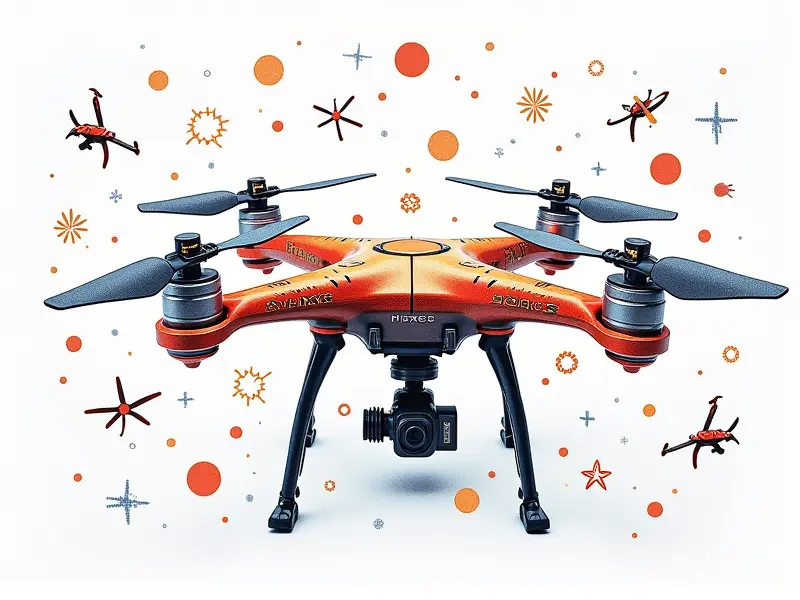How to repair RC planes

Easy Guide to RC Plane Servo Troubleshooting
Servo motors are the heart of your remote control (RC) plane's control system. They translate radio signals into physical movements, enabling precise flight controls such as aileron, elevator, rudder, and throttle adjustments. However, servos can malfunction due to various reasons like wear and tear, electrical issues, or mechanical damage.
Here are some common troubleshooting steps:
- Check Connections: Ensure that all servo wires are securely connected to the receiver and control board. Loose connections can cause erratic behavior in flight.
- Inspect Servo Housing: Look for any cracks or damage on the housing, which could affect the internal gears and motor.
- Test with a Multimeter: Use a multimeter to check if the servo is receiving power. A faulty connection can be identified by measuring voltage at different points in the circuit.
Fixing RC Plane Control Issues Easily
Control issues are common problems that can arise from various causes, including loose servos, incorrect linkage setup, or software glitches. Here’s how to address these:
- Adjust Linkages: Ensure all control linkages are properly adjusted and lubricated for smooth operation.
- Check Receiver Settings: Verify that the receiver is set up correctly with the correct model number and channel settings.
- Update Firmware: Keep your transmitter and receiver firmware updated to ensure compatibility and performance.
DIY RC Plane Fuselage Damage Fix
Fuselage damage can occur from crashes or rough landings. Repairing it is crucial for maintaining the structural integrity of your plane. Here’s how:
- Clean and Dry: Clean any dirt, debris, or moisture from the damaged area.
- Patch Cracks: Use epoxy putty to fill small cracks and holes. Allow it to cure completely before flying again.
- Reinforce Weak Spots: Apply carbon fiber tape over weak areas for added strength.
Quick Fixes for RC Plane Crashes
Crashes can be devastating, but quick action can save your plane. Here are some immediate steps to take after a crash:
- Assess Damage: Check the entire plane for any visible damage.
- Test Components: Test servos and motors individually to ensure they’re functioning correctly.
- Replace Broken Parts: Replace any broken or damaged parts immediately before flying again.
Basic RC Plane Battery Maintenance Tips
Batteries are a critical component of your RC plane’s performance. Proper maintenance ensures longevity and optimal flight times:
- Charge Regularly: Charge batteries fully before each use to maintain their capacity.
- Avoid Overcharging: Use a charger with overcharge protection features to prevent damage.
- Store Properly: Store batteries in a cool, dry place away from flammable materials.
Rapidly Repair RC Plane Control Surfaces
Control surfaces like ailerons and elevators can become misaligned or damaged over time. Here’s how to fix them quickly:
- Align Servos: Use servo alignment tools to ensure that control surfaces move correctly.
- Adjust Linkages: Fine-tune the linkage between servos and control surfaces for smooth operation.
- Replace Worn Parts: Replace any worn or damaged parts immediately to prevent further issues.
Simple RC Plane Landing Gear Repairs
Landing gear is essential for safe landings. Here’s how to repair common landing gear problems:
- Inspect for Damage: Check the landing gear for any cracks or wear.
- Replace Springs: Replace worn-out springs with new ones of the same specifications.
- Lubricate Moving Parts: Apply lubricant to moving parts like shock absorbers and struts.
Easy Guide to RC Plane Paint Repair
Paint damage can occur from crashes or rough handling. Here’s how to repair it effectively:
- Clean the Area: Clean any dirt, grease, or debris from the damaged area.
- Fill Cracks: Use a filler compound to fill cracks and smooth out the surface.
- Paint Over Damaged Areas: Apply touch-up paint to match the original color.
How to Replace RC Plane Props Fast
Replacing propellers is often necessary after crashes or wear. Here’s a quick guide:
- Select Correct Propeller: Choose a propeller that matches your plane's specifications.
- Remove Old Propeller: Unscrew the old propeller from the motor shaft carefully.
- Install New Propeller: Screw in the new propeller and ensure it’s securely attached.
Fixing RC Plane Propellers Without Tools
In emergency situations, you might need to replace a propeller without tools. Here’s how:
- Use a Screwdriver Substitute: Use a small screwdriver or similar tool to unscrew the propeller.
- Apply Pressure: Gently press on the propeller while turning it counterclockwise to loosen it.
- Secure New Propeller: Screw in the new propeller by hand, ensuring it’s tight and secure.
Quick Fixes for RC Plane Props
Propellers can become damaged or worn out over time. Here are some quick fixes:
- Clean Propeller: Clean the propeller with a soft cloth to remove any dirt or debris.
- Check for Cracks: Inspect the propeller for cracks, especially around the hub and blades.
- Replace Damaged Parts: Replace any damaged parts immediately to prevent further issues.
Conclusion
Maintaining your RC plane is crucial for safe and enjoyable flying. By following these guidelines, you can quickly address common issues such as servo malfunctions, control surface misalignment, fuselage damage, battery maintenance, landing gear repairs, paint touch-ups, propeller replacements, and more. Regular checks and timely repairs will keep your plane in top condition, ensuring many hours of fun and adventure.

